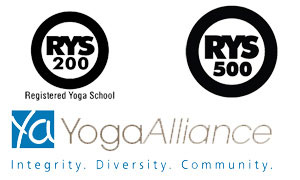Course Structure
Techniques Training Practice
Bandhas lecture practice: Jalandhara Bandha, Moola Bandha, Uddiyana
Bandha, Maha Bandha
Pranayama lecture everyday practical training: Prana Pranic Body, abdominal/diaphragmatic breathing, thoracic breathing, yogic breathing, alternate nostril breathing, Sheetali Pranayama, Sheetkari Pranayama, Bhramari Pranayama, Ujjayi Pranayama, Bhastrika Pranayama, Kapalbhati
Mudras meaning and practice: Jnana Mudra, Chin Mudra, , Hridaya Mudra
Meditation techniques: silent sitting (Vipasana), dynamic meditations, dance meditations, silent walking in nature, silent day (individual), art meditation(meditation through art)
Kriyas theory and practice; benefits and contraindications, techniques and practical tips: Jala Neti, Sutra Neti, Shankhaprakshalana (Langhoo Shankhaprakshalana), Vaman Dauti (Kunjal Kriya), Kapalbhati, Trataka
Mantras and chanting:
Which is commonly use in Vedic culture
Teaching Methodology
Art of teaching: teachers qualities , intentions attitude, teaching styles, observation (general particular, giving instructions, feedback, sequencing, class management class routine, principles of demonstration theory and practice versus, how to demonstrate, how not to demonstrate, practice in groups + feedback)
Anatomy of alignment theory and practice
Correction techniques
Modes of adjustment
Art of touch physical adjustment
Practice in pairs on concrete asanas
Yoga in the market place:
Yoga for older people
Anatomy Physiology
General movement and body terminology
Systems of the human body their meaning and functions
Nervous, Skeletal and Muscular systems and their co-relations in context of yoga practice (special focus! )
The way we move key muscles of yoga analyses of muscles work in practiced asanas (theory practice)
Yoga and health benefits and contraindications of asanas; basic elements of yoga therapy
Energy channels Chacras theory
Written assignment on muscles in context of yoga practice + written practical tests
Yoga Philosophy, Lifestyle and Ethics for Yoga Teachers
Essence of Yoga history, definitions, modes, contemporary meaning:
Historical and cultural background of Yoga
Definition of yoga and its interpretations
4 paths of yoga (Bhakti, Jnana, Karma, Raja)
5 pillars of yoga
3 gunas
Kleshas
Karma reincarnation
Vedas, Upanishads, Bhagavad Gita study on selected texts
OM/ AUM and its meaning
Patanjali Yoga Sutras and their interpretations (selection); 8 limbs of yoga and their meaning in the contemporary WorldEthics for yoga teachers
Values and meaning of being Yogi
the place for Yogi in today’s World
yogic daily routine: principles of diet, meaning of practice and essence of lifestyle
Guided group discussion about basic philosophical issues related to yoga:
The Self and The Ego
The Consciousness
Self Awareness
The Responsibility of being a Yoga Teacher
Written assignment on selected philosophical topics
